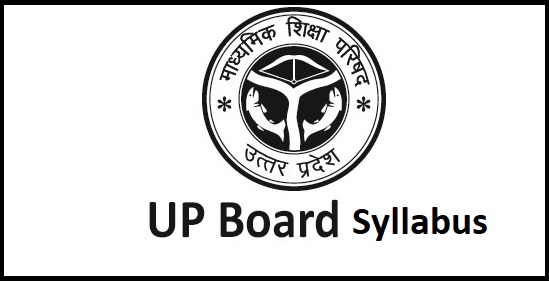CBSE Class 12 Geography Syllabus 2024-25 (Download Geography Syllabus PDF)

Find below CBSE class 12 Geography syllabus 2024. You would know that CBSE is conducting class 12 exam in single term in 2024. In this article, we have also attached the new Geography syllabus of CBSE pdf that you can use further according to your convenience.
CBSE Class 12 Geography Syllabus 2024-25
Check below CBSE class 12 latest syllabus for Geography:
Book- Fundamental of Human Geography
Chapter No. | Chapter Name | No. of periods | Weightage |
Unit I | |||
1 | Human Geography | 7 | 3 |
Unit II | |||
2 | The World Population Density Distribution and Growth | 9 |
8 |
3 | Human Development | 7 | |
Unit III | |||
4 | Primary Activities | 12 |
19 |
5 | Secondary Activities | 10 | |
6 | Tertiary and Quaternary Activities | 10 | |
7 | Transport, Communication and Trade | 15 | |
8 | International Trade | 10 | |
Map Work (Based on identification of features on World Political Map) |
| 10 | 5 |
Total |
| 90 | 35 |
Book-India People and Economy
| Chapter No. | Chapter name | No. of Periods | Weightage |
| Unit 1 | |||
| 1 | Population Distribution Density Growth and Composition | 10 | 5 |
| Unit 2 | |||
| 2 | Human Settlements | 8 | 3 |
| Unit 3 | |||
| 3 | Land Resources and Agriculture | 9 | 10 |
| 4 | Water Resources | 9 | |
| 5 | Mineral And Energy Resources | 9 | |
| 6 | Planning and Sustainable Development in Indian Context | 7 | |
| Unit 4 | |||
| 7 | Transport and Communication | 11 | 7 |
| 8 | International Trade | 9 | |
| Unit 5 | |||
| 9 | Geographical Perspective on selected issues and problems | 8 | 5 |
| Map Work (Based on Marking and labelling on a political Map of India) | 10 | 5 | |
| Total | 90 | 35 |
Practicals
| Chapter No. | Chapter Name | Period | Weightage |
| 1 | Data-its source and Compilation | 5 | 18 |
| 2 | Data Processing | 8 | |
| 3 | Graphical representation of Data | 15 | |
| 4 | Spatial Information Technology | 12 | 7 |
| Practical Record Book and Viva Voce | 5 | ||
| Total | 40 | 30 |
Class 12 Geography Syllabus CBSE 2024-25
Book- Fundamental of Human Geography
1. Human Geography: To define Human Geography and describe the nature and scope of Human Geography as a discipline
2. The World Population-distribution, density, and growth:
- To familiarize learners with some basic concepts of Population Geography.
- To understand the patterns of population distribution in the world and correlate the factors influencing population distribution.
3. Human Development: To understand the concept human development introduced by Dr. Mehbub Ul Haq and Prof. Amartya Sen.
4. Primary activities
- To understand various categories of economic activities.
- To describe Primary activities and relate the physical and social factors that affect the type of primary activities practised in different regions of the world.
- To explain main features of different types of agricultural system practised in the world.
5. Secondary Activities
- To develop understanding of secondary activities with emphasis on manufacturing industries.
- To give an overview of manufacturing processes, types, its significance and recent changes.
6. Tertiary and Quaternary Activities: To understand different types of tertiary activity and its importance in the economy.
7. Transport and Communication
- To acquire knowledge about various modes of transport in different continents.
- To compare and synthesize the information about major transport routes around the globe.
- To understand the development of communication networks and their impact on the modern world.
8. International Trade
- Familiarize the students with the basic concepts and principles of International trade.
- To understand the basis of International trade, Balance of trade and types of International trade.
- Gain knowledge about the concept of Dumping.
- To outline the historical perspective of globalization and Role of WTO, its functions and its implications on the world trade.
- Examine the importance ofsea ports as Gateways of International trade
Book: India People and Economy
1. Population: Distribution Density, Growth and Composition:
- To correlate population distribution and density with the physiography of India.
- To familiarize students with the demographic attributes of India
2. Human Settlements: To understand how the form and size of settlement of any particular region reflects human relationship with the environment.
3. Land Resources and Agriculture:
- To familiarise students with the land-use categories as maintained in the land revenue records.
- To analyse the changes in land- use pattern registered in India due to change in shares of primary, secondary and tertiary sectors in GDP.
4. Water Resources: To familiarise students about the water resources available in India and the factors that determine spatial distribution of the available water resources in the country and its utilization.
5. Mineral and energy resources:
- To know about distribution of various minerals in the world.
- To understand and realize the importance of minerals in human life.
- To create an awareness about nature of different minerals and how to sustain them for the future.
6. Planning and sustainable development in Indian Context: To understand the need for centralised planning (sectoral planning and regional planning) to accelerate uniform economic development over space as well the role of NITI Aayog.
7. Transport and communication:
- To acquire knowledge about various means of transport spread in different parts of India.
- To compare and correlate various modes of transport to the physical regions of India.
- To evaluate the impact of transport and communication networks on the development of our nation.
8. International Trade: To familiarise students about the changes that have taken place in India’s international trade in terms of volume, composition and direction.
9. Geographical Perspective on selected issues: To explain the causes and consequences of different types of pollution in India and suggest the measures to control it.
CBSE Class 12 Geography syllabus 2024 PDF: Check
